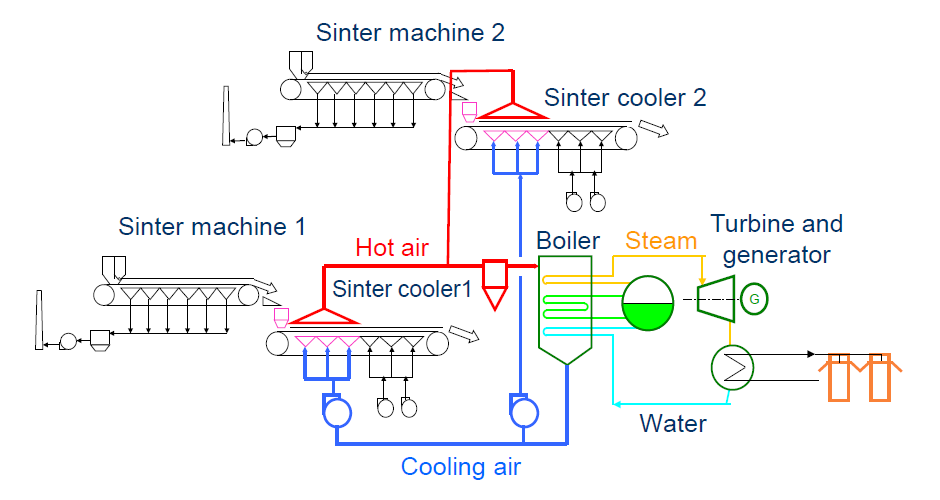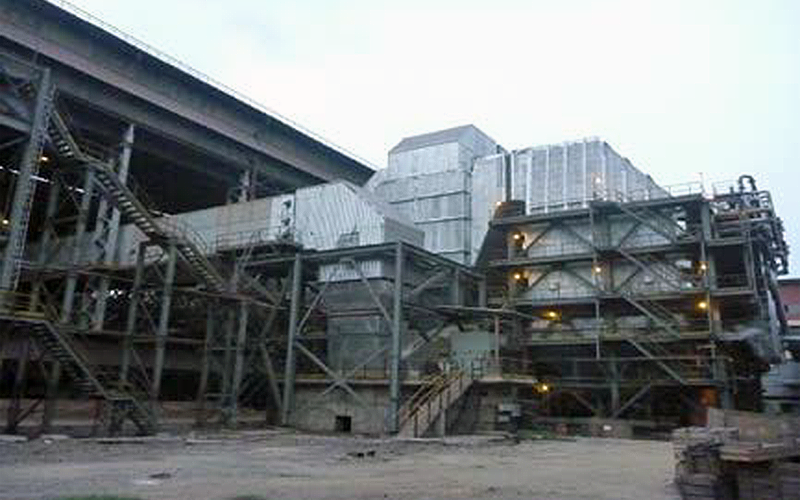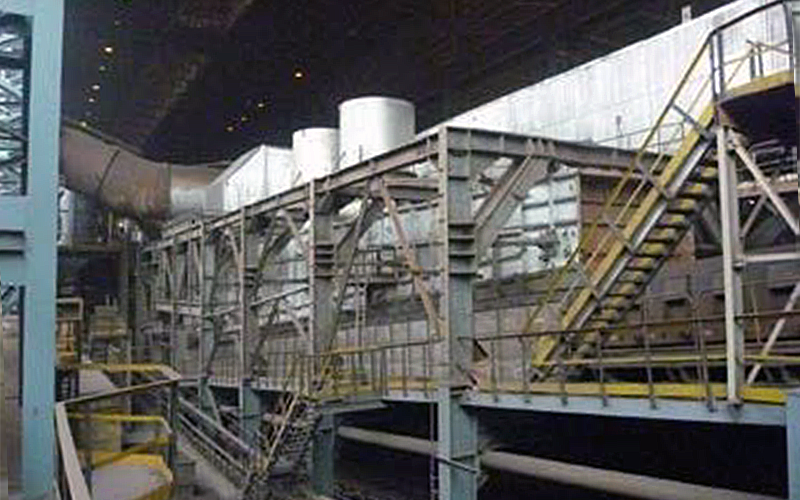Japan Demonstrate Waste Heat Recovery System at Steel Plant in India

Demonstration of a Waste Heat Recovery System at a Steel Plant in India – Reducing Electricity Consumption by 6%
Date: Jul 31, 2014
Source: NEDO
The New Energy and Industrial Technology Development Organization (NEDO), in cooperation with the Ministry of Steel of the Government of India, has completed a demonstration project on a Japanese waste heat recovery system at the Visakhapatnam Steel Plant in the State of Andhra Pradesh in India. The project started in FY2008, and it was undertaken to demonstrate a system to recover sensible heat* from hot air emitted by a sintering and cooling process of a fine iron ore and route it to a heat recovery boiler to generate super-heated steam which is converted to electricity by a turbine connected to a generator. The new system can reduce electricity consumption of the whole plant by 6%.
To commemorate the completion of the system demonstration project, a ceremony was held on Wednesday, July 30, 2014 at the Visakhapatnam Steel Plant. The ceremony was attended by representatives of India and Japan, including relevant people from the iron and steel industry.
* Sensible heat is thermal energy required to change the temperature of a material without a phase change.
Overview
This project introduces a sinter cooler waste heat recovery system to India’s iron and steel industry in order to demonstrate Japan’s advanced energy efficient technology and then disseminate the technology throughout India.
The system recovers sensible heat from hot air emitted by the cooling process of two sinter coolers located downstream of two sinter machines**. The heat is captured by heat recovery hoods and then routed to a heat recovery boiler to generate super-heated steam, which is converted to electricity by a turbine connected to a generator (see Figure 1).
This circulation system is for waste heat which has been emitted only to the atmosphere. The system is expected to promote energy efficiency by utilizing waste heat, thereby reducing CO2 emissions. It will enhance environmental effects because cooling air is used in a closed cycle without emitting a high concentration of dust into the atmosphere and power shortages can also be overcome.
The system demonstration project utilizing two sinter machines began in FY2008 at the Vizag Steel Plant located in Visakhapatnam in the State of Andhra Pradesh. It is operated by Rashtriya Ispat Nigam Limited (RINL), which is owned by the Government of India.
Installation of waste heat recovery equipment capable of 20.6 MW of power generation was completed after construction and system demonstration. The system generates approximately 280 MW of power, which accounts for 6% of all the electricity used at the Vizag Steel Plant. This means that a 6% energy efficiency improvement was achieved.
** A sintering machine agglomerates a fine iron ore into 5 mm to 25 mm of mass at a temperature of about
1,300℃ in order to maintain the permeability and also achieve a high reducibility in a next process, a blast furnace.

Figure 1: Sinter cooler waste heat recovery system flow
| Project name: | International Project for Increasing the Efficient Use of Energy and System Demonstration Project (International Project for Increasing the Efficient Use of Energy), International Model Project for Increasing the Efficient Use of Energy, and Model Project for Sinter Cooler Waste Heat Recovery |
| Project term: FY2008–FY2014 | NEDO budget: Approximately 3 billion yen |
| Estimated energy efficiency improvement: | Approximately 34,000 toe/year Estimated greenhouse gas emission reduction: Approximately 104,000 t/year (carbon gas equivalent) |
| Entrusted company: | JP Steel Plantech Co. |
| Project site: | RINL-Vizag Steel Plant located in Visakhapatnam in the State of Andhra Pradesh, India |
This demonstration project was carried out with support provided by Japan’s Ministry of Economy, Trade and Industry (METI).
Future Outlook
The introduction of the system to other steel plants throughout India is expected to bring about four major benefits to India: first, promotion of energy efficiency in India’s iron and steel industry, which is a major energy-intensive industry; second, overcoming of power shortages; third, CO2 emission reduction; and fourth, creating new opportunities for Japanese companies to export equipment to India.
Completion Ceremony
To commemorate the completion of the demonstration project, a ceremony was held on July 30, 2014 at the RINL-Vizag Steel Plant. The ceremony was attended by representatives of India and Japan, including Mr. G. Mohan Kumar, Secretary of the Ministry of Steel, Government of India, Mr. Fumio Ueda, Executive Director of NEDO and Mr. Shosaku Umezawa, Representative Director of JP Steel Plantech Co. In addition, relevant people from India’s iron and steel industry participated in the ceremony.
Contact Persons
Ms. Yoshizaki, Mr. Sakamoto, Energy Conservation Technology Department, NEDO
Tel:+81-44-520-5284











